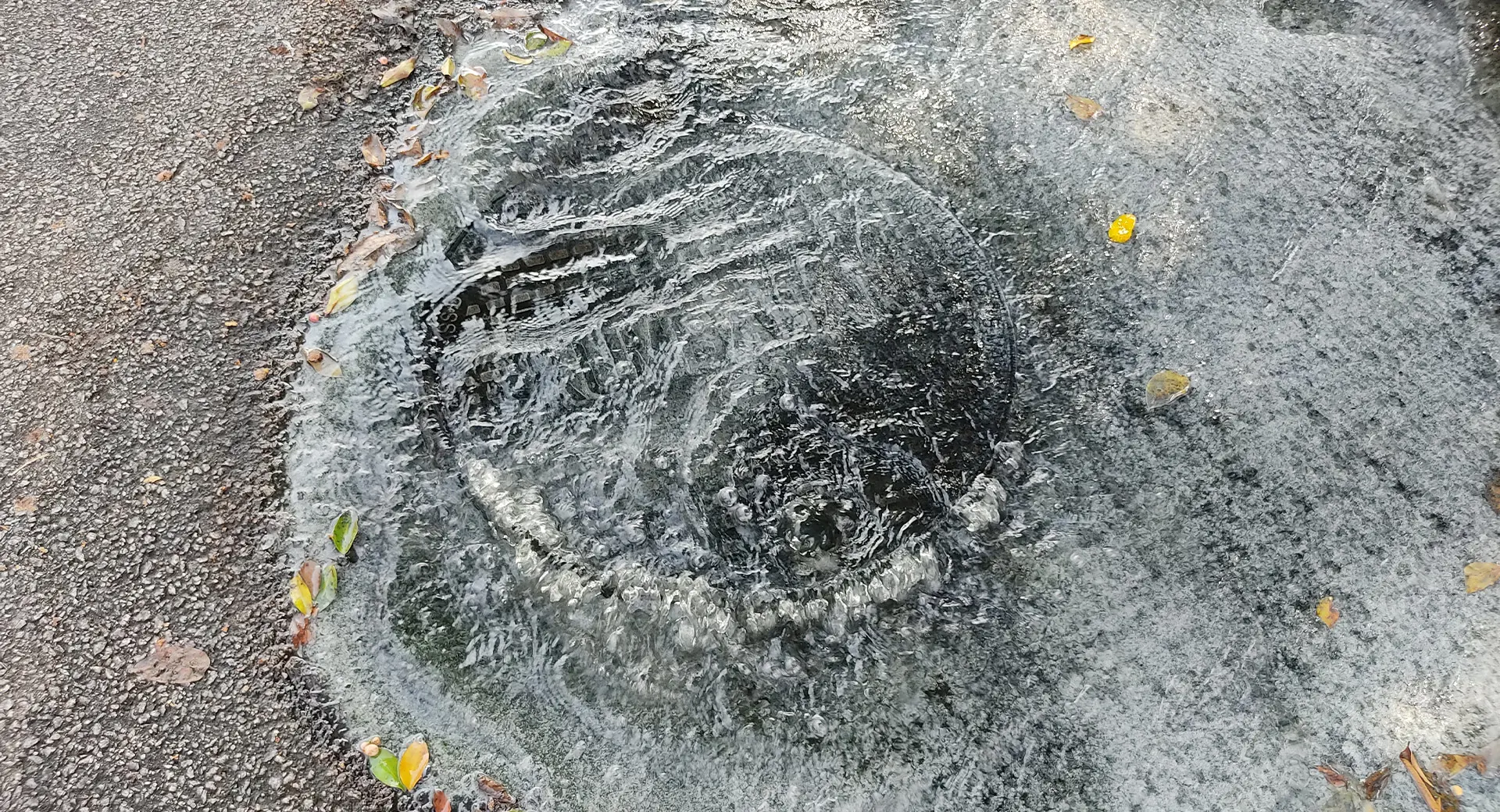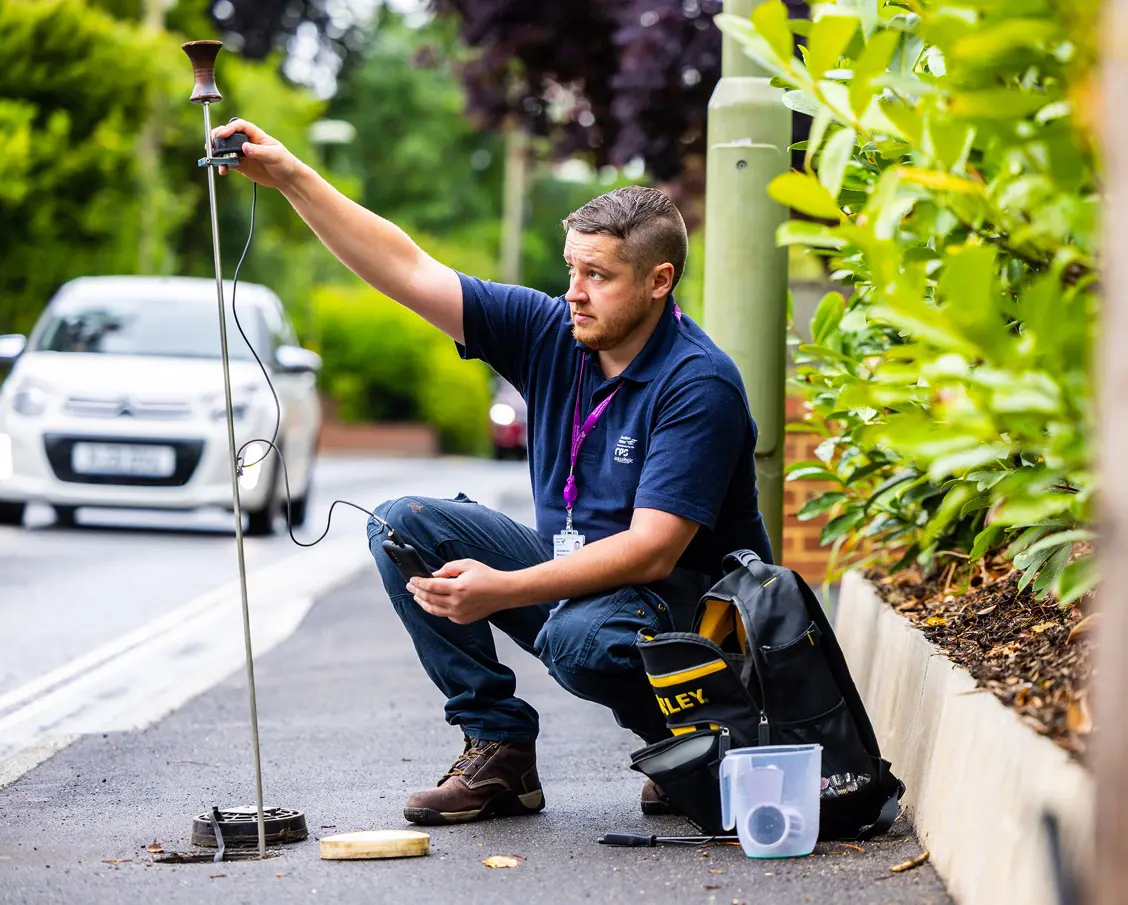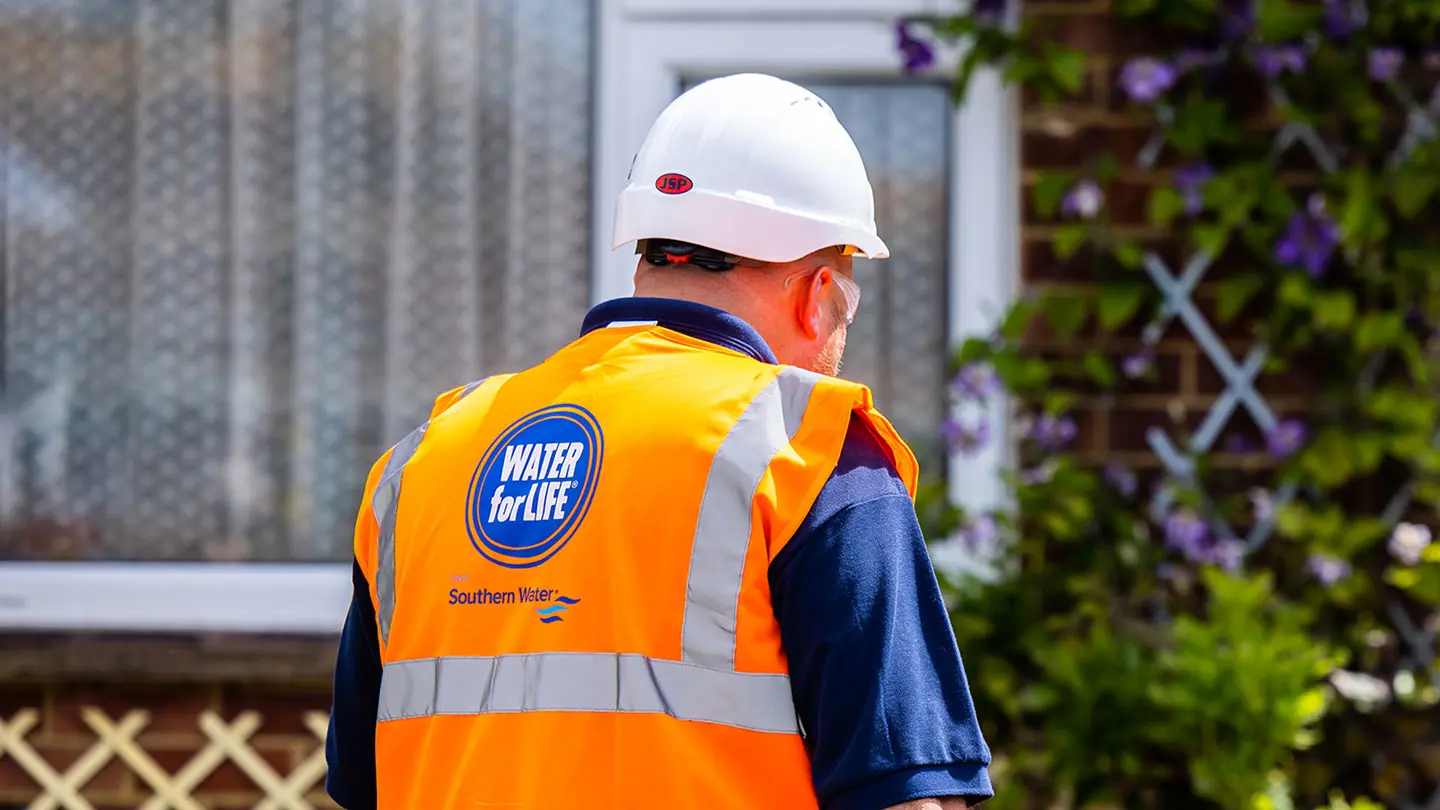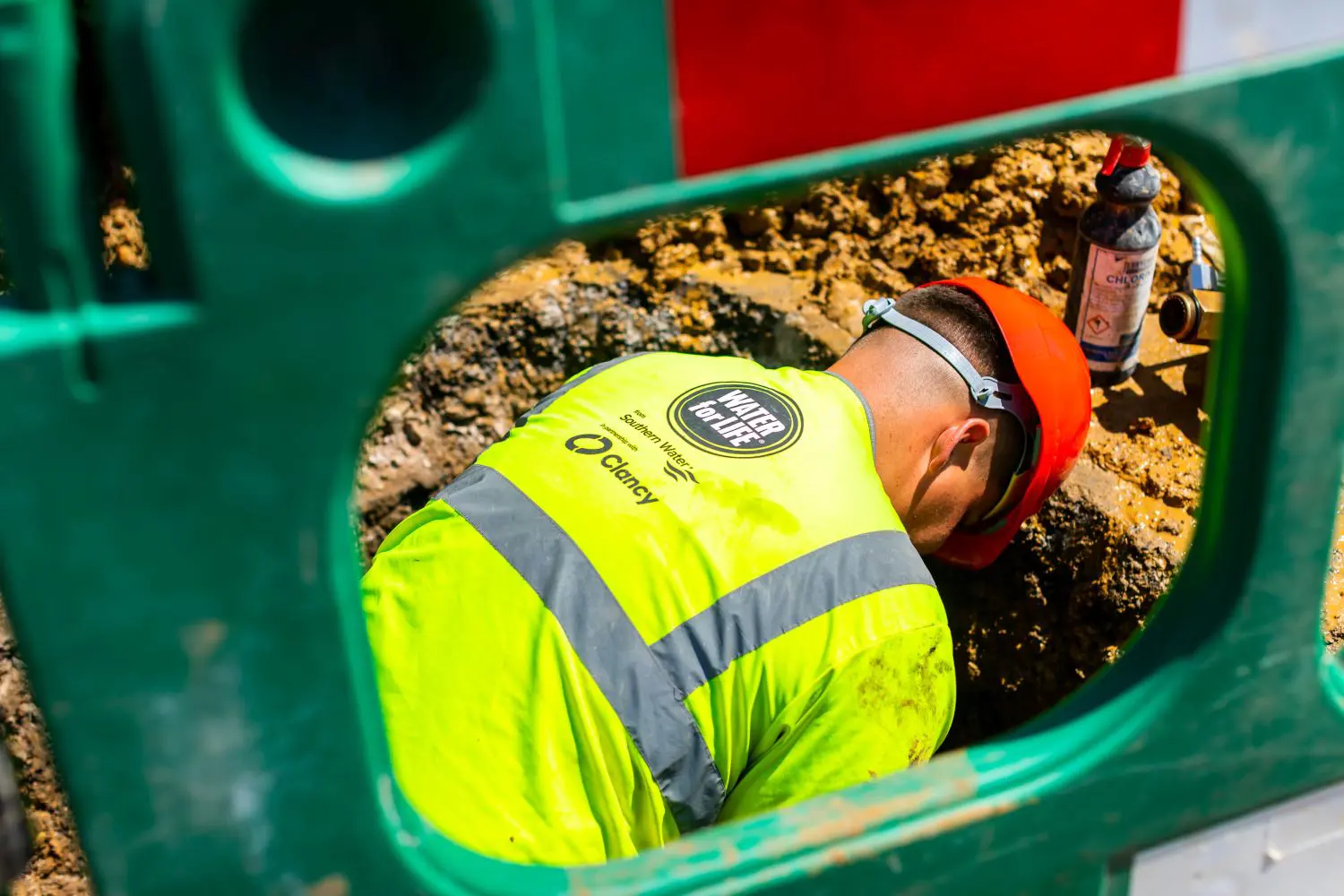How do we fix leaks?
Our teams are always on standby to respond quickly to leaks, fixing around 500 every week. Find out what happens when a leak is reported.
What happens after reporting a leak?
Once we’ve checked things out, we work with the local council and highways to fix it as soon as possible. Coordinating different permissions and permits can take a bit of time, but we’re always working as hard as we can to keep things moving.
How we categorise leaks:
- Urgent leaks (we'll respond within two hours)
- When it’s affecting supply, or causing flooding or damage an inspector will be on site as soon as possible.
- Serious leaks (we'll respond within 24 hours)
- When it’s not affecting the supply but there’s a significant amount of leakage.
- Less serious leaks (We'll respond in up to three days)
- All other leaks.
We’ll always do our best to meet these timeframes but during busy periods we may take a little longer. When this happens, we’ll keep customers informed and be there as quickly as we can.

How we respond to leaks
From locating the leak to competing the repair, the steps below explain what happens when a leak is reported to us.

Report the leak
You can report a leak or call us if it's urgent. We’ll send an inspector out to investigate as soon as possible. We also have teams out and about in our area every day looking for leaks.

Investigation
Our inspector visits to see what’s causing the leak. We'll always aim to do this within the given timeframes but it may take longer during busy periods.

Planning the repair
We'll plan what’s needed for the repair and schedule a date. If we need any permissions or permits, we'll get these before scheduling the work.

Repair
Our repair team will come on the scheduled day to fix the leak. If we need to change plans to carry out emergency repairs elsewhere, we'll let you know. We'll always make sure that the area is safe while we're working. We won’t turn anyone’s water off unless we have to, and we’ll always let you know before we do.

Restore
We’ll aim to put things back to normal within three working days and provide a safe, suitable surface for the area. This can be anything from resurfacing the road to re-sowing grass seeds. When we’re unable to do this, we’ll make a temporary reinstatement instead.
Frequently asked questions about how we respond to leaks
First we'll need to apply to local authorities for permission and agree on the best way to carry out the repair safely with the least disruption. We’ll always do this as quickly as we can and while it can take up to 30 days, we can usually fix things much faster than this.
If we need to put in place road closures or temporary traffic controls when carrying out repairs, this can also take a bit longer to organise.
A temporary reinstatement is a temporary and safe fix for the area affected by flooding. The temporary reinstatement may not use the same material as before so may appear different.
This will be rectified when a permanent reinstatement is completed.
To complete a permanent reinstatement we need to use specialist equipment and be sure the ground has settled after the fix. This could take up to four months.
All reinstatement material is new and therefore has not undergone ageing or weathering like the original material.
We endeavour to match as close as possible to the existing material in order to minimise colour differences.
Any reinstatement left in the interim by the repair team is temporary, to make sure that the site is safe.
The reinstatement team who will then carry out the permanent reinstatement will ensure that the patch is left neat and tidy. Both the temporary and permanent reinstatements will comply with the standards set by the local Highways Authority.
The wet material excavated during repairs contains chalk and clay which may result in temporary staining. Our teams sweep and wash all sites and any staining will fade in due course.
We try to leave all paving slabs in the vicinity of the works. Where this is not possible, we'll take them back to the depot for safekeeping.
We always try to reuse existing slabs. However, on occasion, the slabs may be damaged during the initial excavation and will need to be replaced.
Where possible, we’ll exchange like for like and we'll remove and recycle any damaged slabs.
Unless privately owned, all pavements, roads and kerbs are the responsibility of the local Highways Authority. We carry out all our work with their full knowledge and agreement.
Leaks on water mains can be slow and gradual or erupt very quickly with visible water flooding.
If the water leak is in your garden then there's probably a fault on your supply pipe – which you're responsible for. Find out how to find and fix leaks in your home or garden.
Where possible, immediately turn the water off at your stop tap. If this isn't possible, we'll arrange for someone to attend as a priority. We offer up to one hour of free detection work to help locate the leak on your private supply pipe.
For more information read our Code of Practice on water leaks. This details our responsibilities for the ownership of supply pipes and eligibility for repair.
Contact our customer call centre on 0330 303 0368 (calls charged at local rate) and we'll arrange for someone to visit your home.
We’re exploring new technology to find and fix more leaks across our network. We fix around 500 leaks per week - that’s around 25,500 a year. Sensors, satellites, listening devices and even mini robots help us pinpoint leaks 24/7 on our 13,900km of network. We’ve reduced leakage by about a third over the past 30 years and aim to halve it by 2050.
Find out more about what we're doing to reduce leaks.
You may also be interested in...
Did you find the information you are looking for?










